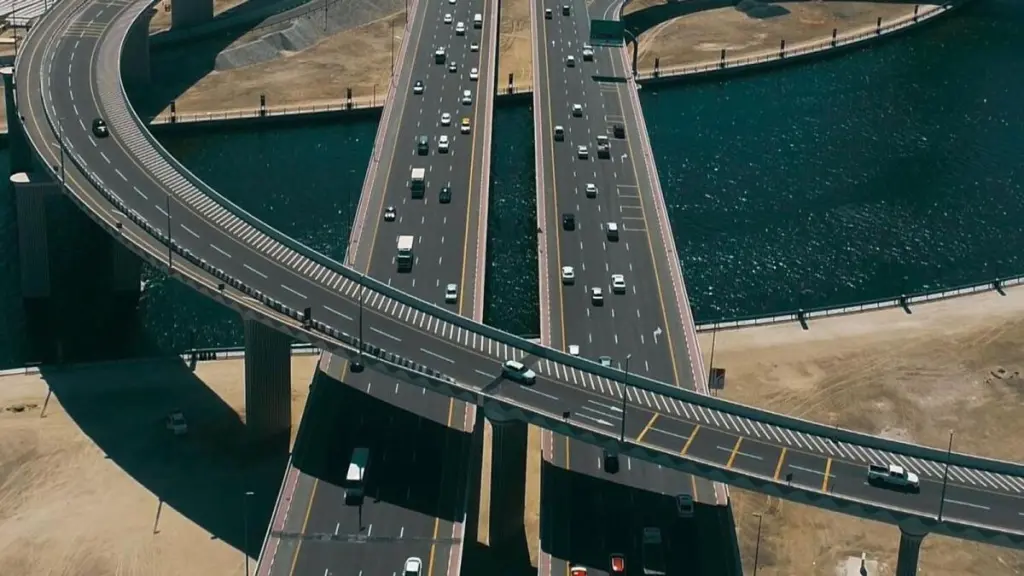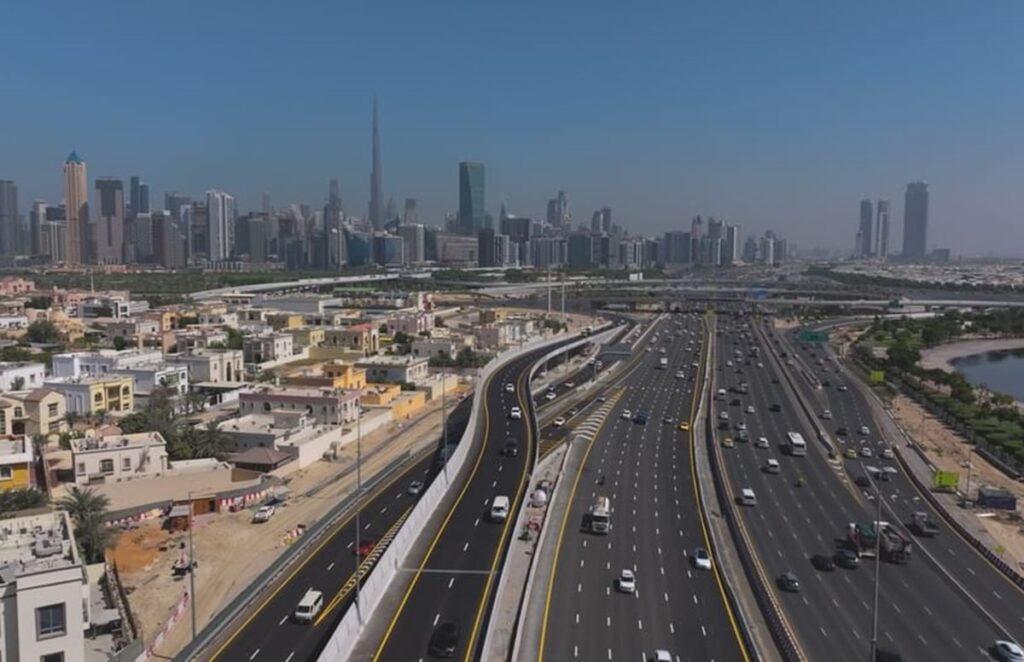Dubai traffic diversion is set to begin at a key intersection on July 13, as authorities move forward with major infrastructure development plans aimed at improving traffic flow and ensuring long-term road safety. This diversion, though temporary, is expected to impact thousands of daily commuters, residents, and businesses in the surrounding areas.
In this comprehensive guide, we will explain why this diversion is happening, what areas will be affected, alternative routes you can take, safety advice, and what commuters should expect in the coming weeks and months.
Why is the Dubai traffic diversion happening?
Dubai is known for its futuristic skyline, ambitious projects, and constantly evolving infrastructure. The Dubai Roads and Transport Authority (RTA) has announced that the diversion is part of a broader plan to upgrade roads and expand capacity to accommodate the emirate’s rapidly growing population and booming economy.

The key intersection where this diversion is set to take place connects several major roads, including Sheikh Zayed Road and Al Wasl Road, two of Dubai’s busiest and most critical traffic arteries. The intersection serves as a vital link for residents traveling between commercial hubs, residential areas, and tourist destinations.
According to the RTA, the construction work aims to enhance traffic efficiency, reduce congestion, and improve pedestrian safety by introducing new flyovers, underpasses, and dedicated lanes for buses and cyclists.

Areas affected by the Dubai traffic diversion
The Dubai traffic diversion will mainly affect the intersection connecting Sheikh Zayed Road with Al Wasl Road near Business Bay and Downtown Dubai. Here’s a closer look at the affected areas:
- Sheikh Zayed Road (SZR), the primary highway running parallel to the coastline and connecting Dubai’s north and south
- Al Wasl Road, a key road running parallel to SZR, known for connecting several residential neighborhoods
- Business Bay and Downtown Dubai, which host major business centers, luxury hotels, and tourist attractions like Burj Khalifa and The Dubai Mall
Residents and visitors traveling from Jumeirah, Al Safa, Al Quoz, and surrounding areas will need to adjust their routes to avoid possible delays.
Expected impact on commuters
The Dubai traffic diversion is expected to cause delays during peak hours, especially for those commuting to and from the business districts. Public transportation services, including buses and taxis, will also need to reroute.
The RTA has assured the public that they will implement clear signboards and digital guidance systems to help drivers navigate alternative routes. However, motorists should plan for longer travel times and consider leaving earlier than usual.
It is anticipated that traffic congestion could spill over to adjacent roads, so travelers should monitor traffic updates regularly through RTA’s official website and social media channels.
Alternative routes suggested by RTA
To mitigate inconvenience, the RTA has recommended several alternative routes for drivers. Here are some of the most suggested detours:
- Al Khail Road, a major alternative that can help drivers avoid the closed intersection and access Business Bay and Downtown from the east side
- Jumeirah Road, for those coming from coastal areas or western neighborhoods, provides an alternative north-south corridor
- Financial Center Road, which can help travelers heading towards Dubai Mall and Downtown Dubai avoid the most congested sections
Additionally, RTA encourages commuters to use public transport where possible, such as the Dubai Metro, which remains unaffected by this diversion.
How long will the Dubai traffic diversion last?
The Dubai traffic diversion is expected to remain in place for approximately three months, with completion targeted for October 2025.
However, this timeline may vary depending on construction progress, weather conditions, and other unforeseen factors. The RTA has promised to provide regular updates and will aim to reopen sections as soon as they are safely ready for use.
Motorists and residents are urged to stay tuned to official announcements to avoid surprises and last-minute changes.
RTA’s advice for a smoother commute
The RTA has shared several tips to help residents and visitors manage the Dubai traffic diversion more smoothly:
- Plan ahead and check real-time traffic updates before leaving home or work
- Use navigation apps like Google Maps and Waze, which are updated with live information and can suggest the fastest alternative routes
- Leave early and allow extra time for your journey, especially during rush hours
- Use public transport such as the Dubai Metro, trams, and buses, which are less affected and can significantly cut down travel time
- Follow signage and pay attention to diversion signs and digital boards to avoid last-minute lane changes or missed exits
Impact on businesses and residents
Many businesses in Downtown Dubai, Business Bay, and surrounding areas are preparing for potential disruptions. Delivery services, hotel shuttles, and logistics companies may face delays, which could temporarily affect schedules.
Residents living near the intersection have expressed mixed feelings. While some appreciate the long-term benefits of smoother traffic and improved infrastructure, others are concerned about immediate inconveniences, noise, and safety risks.
Community representatives have requested that authorities provide additional pedestrian crossings and ensure safety measures are in place during the diversion period.

How is Dubai handling traffic diversions differently?
Dubai has built a reputation for managing infrastructure projects with precision and innovation. Unlike many other cities, Dubai focuses heavily on minimizing inconvenience to commuters even during large-scale construction projects.
Some key strategies used by the RTA include:
- 24/7 construction work to complete projects faster
- Advanced technology including AI-powered traffic monitoring to adjust signals and flow in real-time
- Public communication through early warnings and clear instructions on social media, radio, and on-road digital boards
These proactive steps help Dubai maintain its status as one of the most efficient and modern cities globally, even during major upgrades.
Voices from the community
Several Dubai residents and regular commuters have shared their thoughts about the upcoming Dubai traffic diversion.
“I work in Business Bay and usually drive from Al Quoz. The diversion will definitely add time to my morning drive, but if it improves traffic in the long run, I think it’s worth it.” — Ahmed, Office Manager
“We live near Downtown, and my kids’ school bus route is on that intersection. I hope the authorities prioritize children’s safety during this period.” — Reema, Parent
“I think it’s a good move. The congestion has been getting worse, and a proper upgrade is long overdue. We can adjust for a few months for a better future.” — Khalid, Resident
Safety considerations during the diversion
The RTA has emphasized that safety remains the top priority during the Dubai traffic diversion. Here are some essential safety measures and reminders:
- Watch out for construction workers and obey all posted speed limits
- Be extra cautious at night as diversion areas may have temporary lighting
- Look for pedestrian crossings and respect pedestrian right of way
- Avoid sudden lane changes and stay calm and patient even if you miss an exit or diversion point

Environmental benefits of the new upgrades
While the Dubai traffic diversion may cause short-term inconveniences, the final infrastructure improvements are expected to bring significant environmental and sustainability benefits, including:
- Reduced vehicle idling time, resulting in lower CO2 emissions
- Improved traffic flow, cutting fuel consumption
- More dedicated lanes for buses and cyclists, promoting greener transport options
These upgrades align with Dubai’s long-term vision of becoming one of the most sustainable cities in the world.
What’s next after October?
Once the Dubai traffic diversion ends around October 2025, commuters can look forward to several enhancements:
- Additional flyovers to reduce bottlenecks
- Expanded pedestrian and cycling pathways
- New dedicated bus lanes to support public transportation
- Smarter traffic signal systems to ensure smoother travel
The RTA is also planning to implement similar upgrades in other key intersections across the emirate over the next few years as part of its Dubai 2040 Urban Master Plan.
Final thoughts
The Dubai traffic diversion at the key intersection starting July 13 is a critical step toward modernizing the city’s road network. While the temporary inconvenience may frustrate drivers, the long-term benefits including reduced congestion, improved safety, and support for greener transport will be worth the patience.
For now, the best approach for all Dubai residents and visitors is to stay informed, plan ahead, and support each other in adjusting to this major change. By working together and following RTA’s guidelines, the city can continue to move forward confidently toward a smarter and more sustainable future.
Conclusion
Dubai traffic diversion at a key intersection from July 13 might seem like a big disruption now, but it reflects Dubai’s commitment to building a city prepared for future growth. With proactive planning, community cooperation, and innovative technology, Dubai continues to set an example for urban development worldwide.
Do follow UAE Stories on Instagram
Read More: Top 5 Reasons to Consider Dubai for Expanding Your Trading Business














